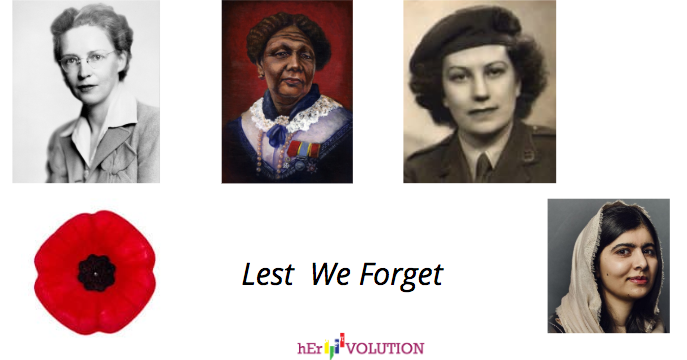Remembrance Day is a day for all Canadians to remember the men and women who served and sacrificed for our country. It is a day we encourage every individual, young and old, to pause, to give thanks and to remember.
We want to capture and remember 3 women that have contributed to this day yet failed to be recognized as they have always been expected to stand behind the lines only because they were born women and doing a man’s job was simply…not expected of them. Let’s shed a light on some of the heroines who deserve to be recognized for their devoted commitments to freedom just as much as their male counterparts are. These heroines are not just Canadians, however, considering that Canada is ground for people from around the world, it only makes sense to recognize these women as they have impacted Canada in a way or another, for the better.
1. Elsie Macgill = Queen Of The Hurricanes
It is only fair we start with a Canadian heroine who contributed as being the first woman to design an aircraft. During that time she was recognized as top aeronautical engineers, a field dominated by men. She holds the title of a heroine in this field to many of us today. She worked as an aeronautical engineer during the Second World War and did much to make Canada a powerhouse of aircraft construction during her years at Canadian Car and Foundry (CC&F) in Fort William, Ontario. Between 1967–1970 she was a commissioner on the Royal Commission on the Status of Women in Canada, published in 1970.
2. Mary Seacole Legendary Doctress And War Heroine
Mary was born in Kingston Jamaica to a Scottish father and a free black woman who ran a boarding house and used herbal medicine to treat people who were ill. Mary inherited her knowledge of herbal medicine from her mother and became a doctress herself. Although she was denied her healing services by the British Army, Mary founded a business called British Hotel selling food and drinks to British soldiers and using her revenue to finance the medical treatments she gave to soldiers. On several occasions, she was found treating wounded soldiers from both sides while the battle was still going on.
3. Eileen Nearne – Heroine of World War II
Eileen Nearne was parachuted into France in 1944, days before her 23rd birthday, where she worked undercover for the Special Operations Executive (SOE) as a radio operator and courier in Paris. On July 25, 1944, the Gestapo arrived at her hide-out just after she had transmitted a message and arrested her. She was taken to the local Gestapo HQ, where she told them she was a French woman called Jacqueline Duterte. She told them she was working for a businessman and that she did not understand the messages she sent. Elaine’s report reveals: “He said: ‘Liar, Spy’, and hit me in the face. He said: ‘We have ways of making people who don’t want to talk, talk. Come with us’.” When asked how she kept up hope, Eileen said: “The will to live. Willpower. That’s the most important. You should not let yourself go. It seemed that the end would never come, but I have always believed in destiny and I had a hope.”
Bonus heroine: Malala Yousafzai – Today’s Advocate To Access To Education For Girls Worldwide
Malala was shot in the head by Taleban for her bravery to speaking up as her right to education. Malala and her father’s work at the UN includes a target to inspire organizations, government agencies and individuals to join those committed in getting 61 million children to start, or stay put in, primary school education worldwide. When Malala began writing for the public in 2009 at the age of 11 for BBC News in Pakistan she used a pseudonym. Her name for her writing was Gul Makai, a pen name used for her protection. During months of blogging she went deep to describe how she was afraid of going to school. And how the increased presence of religious extremists became more and more commonplace in the Swat Valley. It was a time when restrictions on schoolgirls became part of everyday life as she outlined how girls in the region were told “not to wear colourful clothes as the Taleban would object to it.” They also began to threaten those who spoke out about education freedom, including Malala. Along with the drum for education Malala also brought the issue in the fight for women’s equality to the floor.
As she traveled from Europe to the United States she is building steam in a dizzying flurry of activity as she continues to go head-to-head with those who stubbornly believe that girls and women worldwide must be censured from education, especially from schools that include topics like the study of science, math or the humanities.
Since her story became known to all of us, Malala became a prominent activist and she founded Malala Fund and wrote her book, I am Malala. At age 17 she became the youngest-ever Nobel Prize laureate. In 2017, she was awarded honorary Canadian citizenship and became the youngest person to address the House of Commons of Canada.
Who are your heroines and why?

